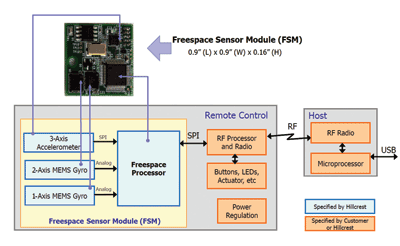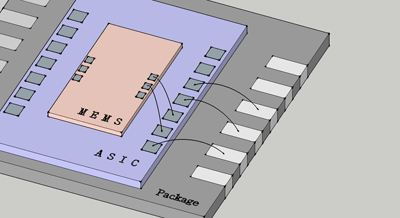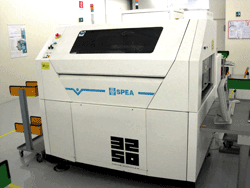Thinking outside the chip for MEMS design success
By ROGER H. GRACE
Roger Grace Associates, Naples, FL
http://www.rgrace.com
MEMS devices have been available for almost 50 years. Pressure sensors, accelerometers, gyros, and displacement sensors have been popularly used as system components for a wide spectrum of applications in the automotive, aerospace, industrial, medical, and (most recently) consumer markets. However, only until recently has there been an epiphany in the MEMS community that has led to “thinking outside the MEMS chip” and considering all other elements/functionalities required to create an optimum systems solution.
http://www.nxtbook.com/nxtbooks/hearst/projectmems_201012/index.php?startid=6

Hillcrest Labs uses a 32-bit processor and embedded software to extract meaningful hand-orientation information.
Electronics for MEMS: Design issues and tradeoffs
BY AMR HAFEZ
Si-Ware Systems, Cairo, Eqypt
http://www.si-ware.com
and ROGER H. GRACE
Roger Grace Associates, Naples, FL
http://www.rgrace.com
MEMS developers are increasingly coming to the realization that electronics play a fundamental role in any microelectromechanical system, and are a key element in realizing many benefits of MEMS, such as cost reduction and miniaturization. A good electronics design will showcase the real performance of a MEMS part, while a mediocre electronics design will limit the performance or cause unacceptable behaviors.
http://www.nxtbook.com/nxtbooks/hearst/projectmems_201012/index.php?startid=13

Multichip packaging of MEMS devices can reduce parasitics and external interference.
MEMS testing: Innovations in mass production
BY MARIO F. CORTESE and GIOVANNI AVENIA
STMicroelectronics, Milan, Italy
http://www.st.com/mems
By ROGER H. GRACE
Roger Grace Associates, Naples, FL
http://www.rgrace.com
Manufacturers of consumer MEMS devices face a number of key challenges to achieve a consistent and robust test platform for mass production. This article aims to sketch out scenarios for the testing of inertial and non-inertial MEMS in the years ahead.
http://www.nxtbook.com/nxtbooks/hearst/projectmems_201012/index.php?startid=18

Developed in cooperation with SPEA, this is one of the first ATE handlers used by STMicroelectronics for testing MEMS accelerometers.
When MEMS/CMOS integration makes sense
In the past few issues of Project MEMS , we’ve discussed the move away from using monolithic silicon solutions to creating MEMS-based sensor and transducer systems. The use of muti-IC designs has made it possible to create devices quickly and less expensively than trying to force both MEMS and digital devices onto a single wafer of silicon.
But does that mean that monolithic device solutions are dead? According to a recent article by Karen Lightman, Managing Director of the MEMS industry Group, there are particular times when monolithic integration may be the best solution. For example, Stafford Johnson, engineering manager at MEMSCAP, told Karen that when length and resistance of wiring impacts system performance, a fully integrated custom CMOS/MEMS solution may be a viable option. “While off-the-shelf components reduce costs and speed time to market,” he states, “there are still instances in which custom solutions may be required.”
At the same time, the industry is busily finding new, more efficient, and more effective ways to package MEMS and CMOS device using techniques like wafer bonding and through-hole vias to reduce wiring distances while creating more robust devices.
So as the industry moves forward and demand for MEMS enabled solutions continues to grow, it seems that both monolithic and non-monolithic devices will continue to evolve. In both cases, the need for tighter integration in less space will be the driving factor.
Richard Comerford
Advertisement
Learn more about Digi-Key





